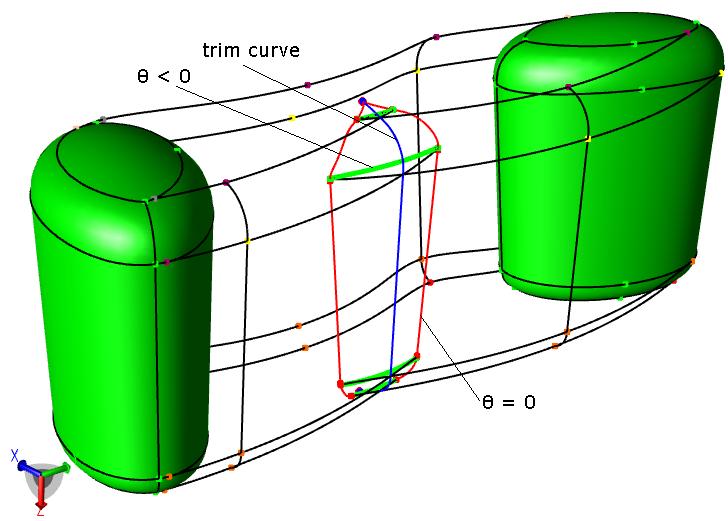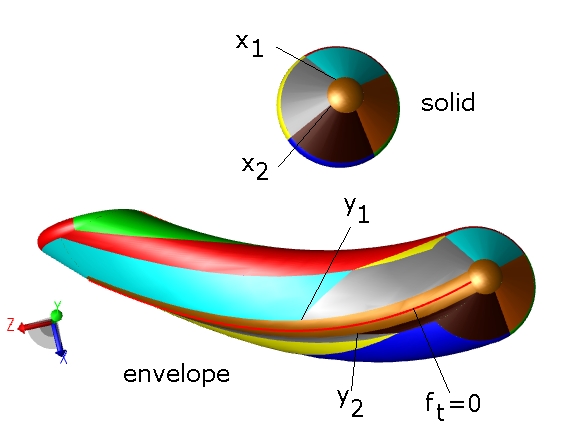I work in the area of computer aided geometric design. This encompasses
research and development of algorithms and software which aid the
processes of design and manufacture of parts and products.
I am about to defend my Ph.D. under the guidance of
Prof. Milind Sohoni
and Prof. Bharat Adsul.
Listed below are the projects which we undertook during my Ph.D. at IIT Bombay.
Data mining: During my M.Tech. I worked on learning to rank for information retrieval when I explored conditional models for ranking loss functions and efficient local learning for ranking.
Embedded systems: I worked in the domain of real-time embedded systems during the development of firmware for industrial grade continuous inkjet printers at Tech Mahindra from 2005 to 2007.
 |
Solid sweeps: Local and global analysis
Solid sweep involves computing the volume swept by a given solid moving along a one parameter family of rigid motions. This work gives an accurate parametrization of the envelope surface and addresses the problem of resolving self-intersections using a novel geometric invariant. Accepted in Computer Aided Geometric Design. PDF. |
|
A computational framework for solid sweeps
The boundary representation, or brep, is a de facto standard for the computer representation of 3D solids. This work addresses the issues involved in computing the brep of the swept volume, namely, the adjacency relations amongst the faces, edges and vertices of the envelope and their orientations. The brep structure of the envelope is derived from that of the solid via the natural correspondence between the two which is illustrated by color coding in the adjacent figure. Accepted in Computer Aided Design and Applications. PDF. |
 |
 |
Incorporating sharp features
Handling G1 discontinuities in the input solid requries special consideration. This work computes the volume swept by a solid having sharp edges and vertices. The interplay between the cone of normals at a sharp point on the solid and the trajectory leads to efficient computational constructs for computing the parts of envelope generated by sharp features. In submission. PDF. |
|
Design of conveyor screws
Complex product handling requirements in manufacturing plants can be met with conveyor screws. The product sits inside the groove of the screw which rotates about its own axis, thereby imparting the desired motion to the object. In the adjoining figure the elliptical bottle translates as well as rotates about its own axis as the screw rotates. The surface of the screw is designed by compounding the desired motion of the object with the rotation of the screw and sweeping the product along the resultant moiton. The volume thus swept is subtracted from a cylinder to obtain the screw. Demo. |
 |
Data mining: During my M.Tech. I worked on learning to rank for information retrieval when I explored conditional models for ranking loss functions and efficient local learning for ranking.
Embedded systems: I worked in the domain of real-time embedded systems during the development of firmware for industrial grade continuous inkjet printers at Tech Mahindra from 2005 to 2007.